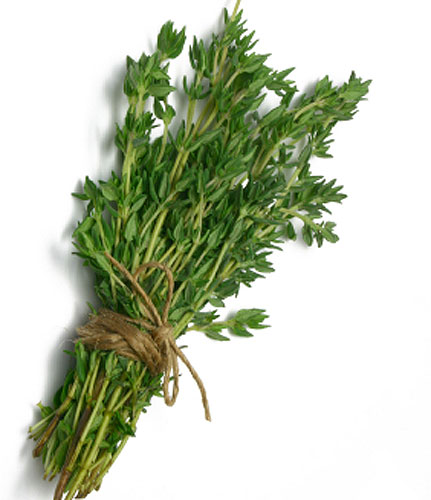How to Learn Thyme Varieties

Originating from the mountainous regions of Spain and European countries bordering the Mediterranean, thyme is a classic Middle Eastern herb, but has grown to become a part of many other types of cuisines around the world. While thyme, like many other herbs, has medicinal properties, and can be used as an antiseptic on small wounds, its primary use is in cooking, where it infuses dishes with a warm, woody scent, and enhances the flavour of everything from meats and stews, to vegetables and soups.
There is a wide array of thyme varieties available, and each is different in appearance and taste. Learning to identify these can help you use thyme to full effect – e.g. by familiarising yourself with all the types, you will know that English Thyme is best for use in meat and stew dishes, while Green Lemon Thyme is best for chicken and fish.
Instructions
-
1
Begin by familiarising yourself with the fact that there are three common varieties of thyme. These are the narrow-leaved, broad-leaved and variegated varieties. These tend to be distinguished by their appearances, and this is the most common way of learning thyme varieties. Other methods include distinguishing the types by their height, and fragrance, etc.
-
2
First, start learning about the narrow-leaved varieties. Most commonly, these include types such as German or Winter Thyme. These have gray-green leaves, and are also known as Garden thyme. This type is particularly aromatic and has a pleasant scent which makes it great for both planting and culinary purposes.
-
3
Next, move on to studying about the broad-leaved varieties. These have larger leaves, and in comparison to the narrow-leaved varieties, are much hardier, and better equipped to brave the winter season. One such type is Lemon Thyme, which has a distinct lemony scent and flavour, along with large, broad, and flat leaves that do not curl at the edges.
-
4
Then, look into the variegated varieties of thyme, which have streaks of different colours on their leaves. Prominent among this type is the Silver Thyme, which is recognised as one of the best varieties of thyme in terms of taste. In addition to the taste, it is also exceptionally attractive, with gray/green leaves edged with silver, and is the hardiest type of thyme.
-
5
Finally, once you have learnt about the main varieties, you can look into other sub-categories, such as Orange Thyme, Caraway Thyme, Crimson Thyme, Creeping Thyme, Turkish Thyme, Woolly Thyme, and the like. The sub-categories of thyme have distinct tastes, while some are not meant to be eaten at all, and are purely for aesthetic purposes.



